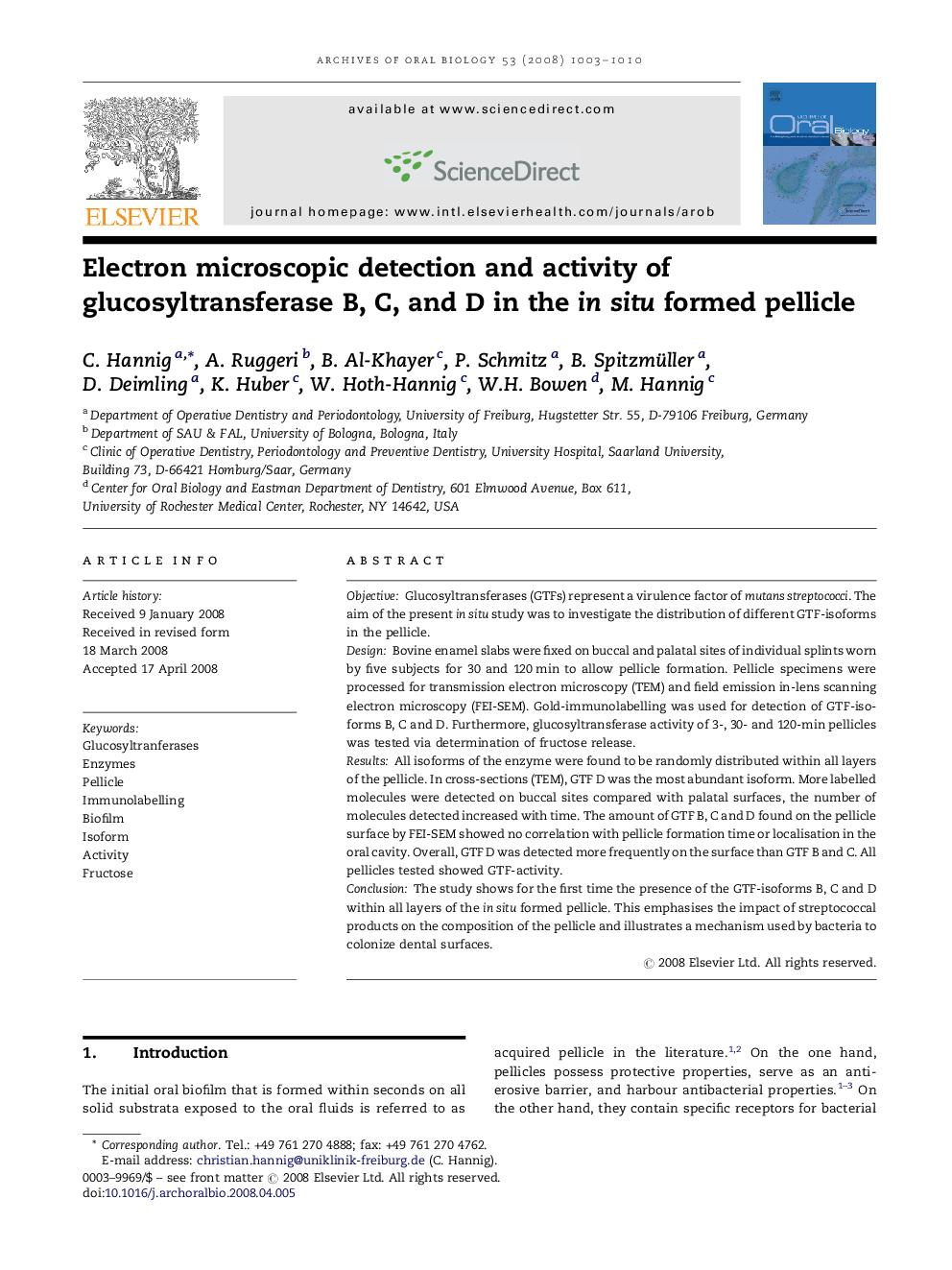| Article ID | Journal | Published Year | Pages | File Type |
|---|---|---|---|---|
| 3121391 | Archives of Oral Biology | 2008 | 8 Pages |
ObjectiveGlucosyltransferases (GTFs) represent a virulence factor of mutans streptococci. The aim of the present in situ study was to investigate the distribution of different GTF-isoforms in the pellicle.DesignBovine enamel slabs were fixed on buccal and palatal sites of individual splints worn by five subjects for 30 and 120 min to allow pellicle formation. Pellicle specimens were processed for transmission electron microscopy (TEM) and field emission in-lens scanning electron microscopy (FEI-SEM). Gold-immunolabelling was used for detection of GTF-isoforms B, C and D. Furthermore, glucosyltransferase activity of 3-, 30- and 120-min pellicles was tested via determination of fructose release.ResultsAll isoforms of the enzyme were found to be randomly distributed within all layers of the pellicle. In cross-sections (TEM), GTF D was the most abundant isoform. More labelled molecules were detected on buccal sites compared with palatal surfaces, the number of molecules detected increased with time. The amount of GTF B, C and D found on the pellicle surface by FEI-SEM showed no correlation with pellicle formation time or localisation in the oral cavity. Overall, GTF D was detected more frequently on the surface than GTF B and C. All pellicles tested showed GTF-activity.ConclusionThe study shows for the first time the presence of the GTF-isoforms B, C and D within all layers of the in situ formed pellicle. This emphasises the impact of streptococcal products on the composition of the pellicle and illustrates a mechanism used by bacteria to colonize dental surfaces.
